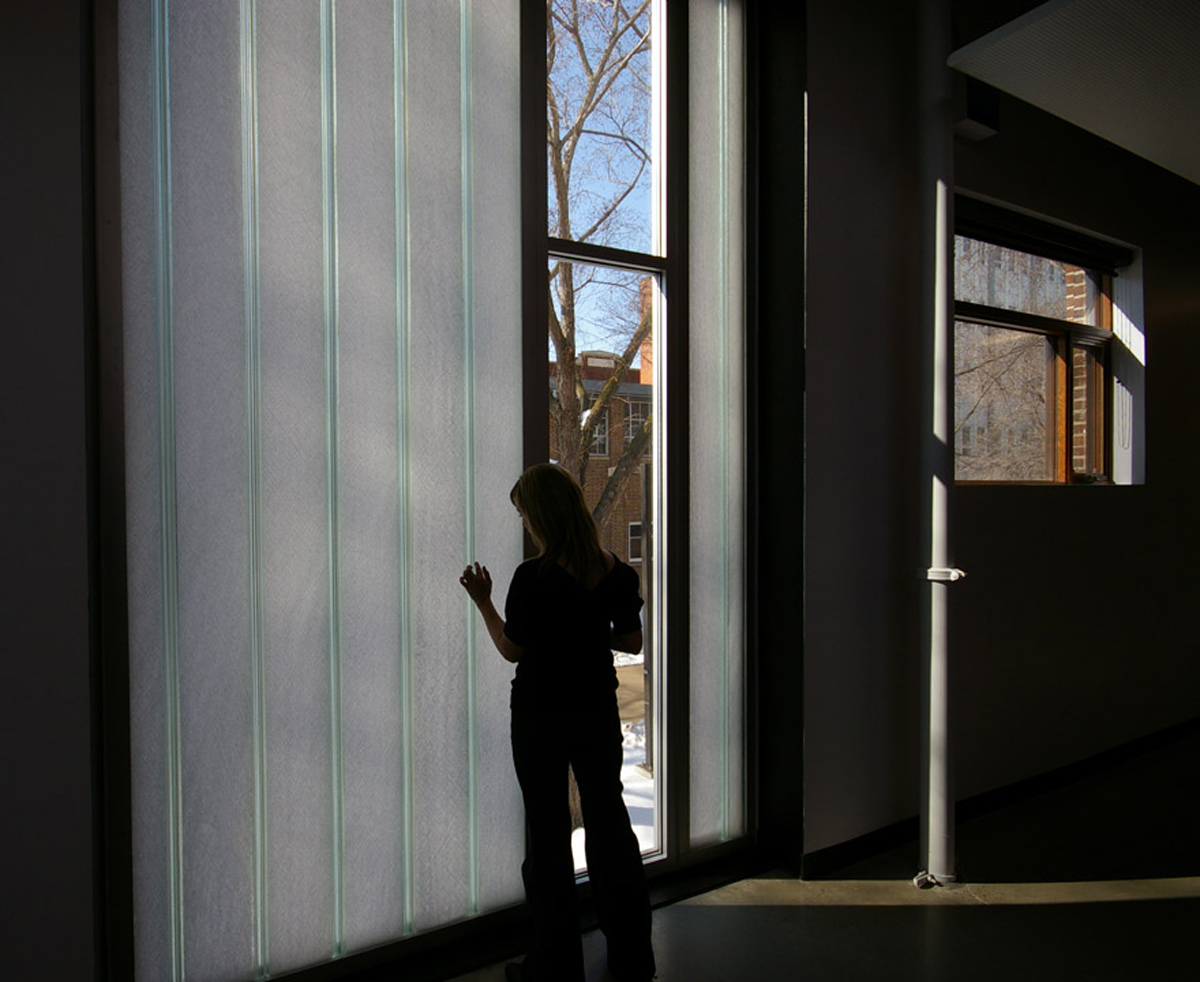Achieving Energy-efficient Buildings: Using thermally enhanced channel glass for energy savings
Rainscreens and Trombe walls
In addition to double-glazed performance walls for occupied space applications, channel glass systems may also be an effective part of passive heat-absorbing exterior walls, an example being a Trombe wall. In this application, the building’s main exterior wall is constructed to absorb solar energy and transmit it to the interior. When a translucent channel glass screen wall is installed offset from the building, it allows a volume of air to be captured and heated outside the passive wall. The installation enhances the passive wall’s ability to retain heat without diminishing the incidence of solar radiation. The space between the channel glass and the main building wall varies in accordance with HVAC’s design and can be control-vented to regulate a convective air flow.
Walls of this nature can be used to minimize the size and usage of HVAC equipment and the associated energy costs for a building. In some moderate climates, Trombe walls have been so successful HVAC systems were not required to maintain a comfortable interior space.

Another application of channel glass is as a rainscreen with a structural wall behind it, as commonly used in museum applications. The channel glass may be configured as a decorative screen to address more than 90 per cent of the imposed forces of nature while having the structural wall behind it create the necessary ‘dry box’ required for the artifacts inside. Channel glass is also commonly used as a screen wall with no structural wall behind it, as in parking structure applications where it primarily functions as a decorative façade while providing wind and rain protection. These are typically not thermal control environments.
Managing natural light in interior space
Interior partitions built with channel glass systems transmit natural light into the spaces for occupants’ benefit. Studies have shown natural light may improve the mind-set and productivity of employees, helps patients improve in healthcare facilities, and can reduce energy costs and artificial lighting requirements.
Once natural light has been brought into the building, the challenge becomes distributing and using it. Channel glass partitions may be assembled vertically or horizontally and later disassembled and reassembled in different configurations. The variety of channel glass textures further enhances design possibilities for architects by allowing different levels of transparency, translucency, and privacy.
Conclusion
Channel glass presents a unique and flexible opportunity for designers to create walls of unlimited width with options to progressively enhance the thermal performance. The options of channel widths and textures allows for a wide array of layouts. Interlocking systems create cavities that may be filled with thermal insulation materials to augment the heat-blocking coatings on the glass and achieve overall performance values according to a project’s needs.
With the number of available options, the designer must determine the optimal values of heat transfer and visible light transmission required for the project. This information must be conveyed to all parties in the plans and specification process.
Jim Donoghue is the technical services manager for Bendheim Wall Systems. He has more than 40 years of experience in the construction industry. Donoghue possesses both an MBA and a degree in mechanical engineering. He can be contacted via e-mail at jdonoghue@bendheim.com.
To read the case study about Los Angeles Public Library’s Silver Lake Branch, click here.







